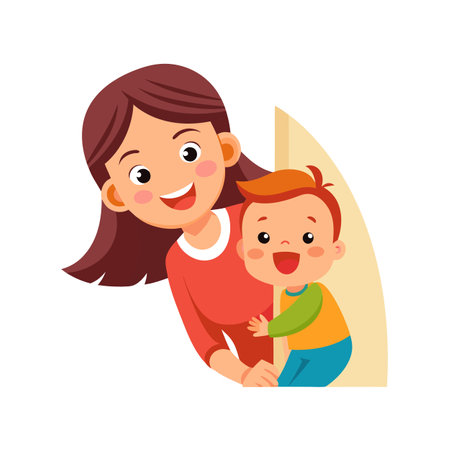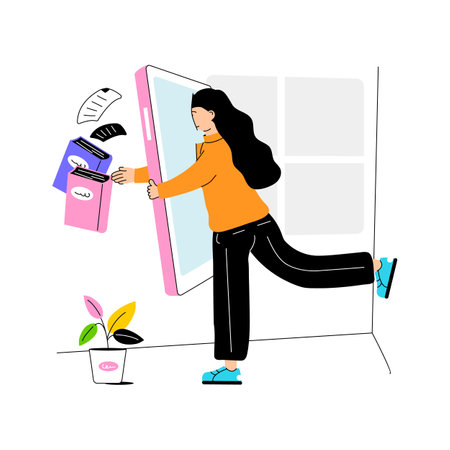Understanding Window Safety Laws in the UK
When it comes to protecting our little ones at home, window safety is a crucial topic for every UK family. The United Kingdom has specific regulations and standards designed to reduce the risk of accidents involving windows, especially in households with babies and young children. UK Building Regulations Part K outlines important requirements for the prevention of falls from windows in both new builds and renovated properties. For example, windows that are positioned less than 800mm from floor level must be fitted with restrictors that limit their opening to no more than 100mm, helping to prevent small children from squeezing through. In addition, British Standards such as BS EN 14351-1 ensure that manufacturers provide safe and reliable window fittings suitable for family homes. Local councils may also offer additional guidance or requirements for rental properties, particularly those let to families. By understanding these laws and recommendations, parents can make informed decisions about window safety products and practices, creating a secure environment where babies and young children can explore and grow safely.
2. Identifying Risks: Common Window Hazards for Babies
British homes, from classic Victorian terraces to modern flats, can present various window-related hazards for babies and toddlers. It’s crucial to understand these risks so you can take proactive steps towards a safer environment. Here’s a closer look at the most common dangers:
Falls from Windows
One of the primary concerns in UK households is the risk of falls. Many homes have low-set windows or windowsills that are easily accessible, especially as little ones start to crawl, stand, and explore. Even a small drop can cause serious injury, making it essential to be aware of your home’s layout and window types.
Window Blind Cord Strangulation
Another often-overlooked hazard comes from window blind cords. The Royal Society for the Prevention of Accidents (RoSPA) highlights strangulation risks associated with looped cords, which can be particularly dangerous for curious hands. Regulations now require new blinds to have safety features, but older installations may still pose a threat.
Poor Window Placement and Furniture Arrangements
Sometimes, it’s not just the window itself but its placement and what’s nearby that increases risk. Furniture placed directly beneath or beside windows can serve as a climbing aid for adventurous toddlers. This can lead to unintended access and potential accidents.
| Hazard Type | Description | Common Locations in UK Homes |
|---|---|---|
| Falls from Windows | Windows positioned low enough for children to reach; unsecured or wide-opening windows. | Bedrooms, living rooms, upstairs landings |
| Blind Cord Strangulation | Unsecured looped cords on blinds or curtains within reach of babies and toddlers. | Kitchens, nurseries, living areas with large windows |
| Poor Window Placement/Furniture Arrangement | Furniture near windows enabling climbing or easy access to sills. | Children’s rooms, play areas, lounges |
Being mindful of these risks is the first step in creating a safer home. In the next sections, we’ll explore UK-specific regulations and offer practical ideas to minimise these dangers while still enjoying natural light and fresh air in your living spaces.

3. Childproofing Windows: Practical Steps for Parents
When it comes to keeping your baby safe at home, windows are often overlooked but can pose significant risks. Fortunately, there are several hands-on ways British families can childproof their windows, following UK safety guidelines and recommendations.
Choose the Right Window Locks
Start by fitting window locks that meet British Standards (BS 3621 or equivalent), which ensure robustness and reliability. These locks prevent windows from being opened wide enough for a child to climb through, while still allowing adults to open them fully in case of emergency.
Install Window Restrictors
Window restrictors are highly recommended across the UK, especially in family homes and rented properties. They limit how far a window can open—generally no more than 100mm (about 4 inches)—while still providing ventilation. Look for restrictors that are compliant with UK regulations and cannot be easily tampered with by little hands.
Safety Catches: An Extra Layer
Adding safety catches to your windows offers another layer of protection. These devices are simple to fit and stop the window from opening beyond a certain point unless released by an adult. Be sure to regularly check that all catches remain secure and functional as part of your childproofing routine.
Don’t Forget Routine Checks
Get into the habit of inspecting window locks, restrictors, and catches frequently—especially after visitors or maintenance work. It’s also wise to keep furniture and toys away from windowsills so babies cannot climb up and reach the window. With these practical steps, you’ll create a safer environment for your little one while adhering to UK standards.
4. Safe Window Dressings and Cord Management
When it comes to keeping your baby safe at home, window dressings such as blinds and curtains require special attention. In the UK, there are specific regulations regarding the safety of blind cords to prevent accidents and injuries in young children. Here’s how you can make sure your window coverings are both stylish and safe for your little one.
Choosing UK-Compliant Blinds and Curtains
Always select blinds that meet British Safety Standards (BS EN 13120). Most modern blinds sold in the UK now come with built-in safety features such as breakaway cords or concealed mechanisms. Consider opting for cordless blinds, wand-operated designs, or spring-loaded roller blinds for the safest options.
Types of Window Dressings and Their Safety Features
| Type | Safety Feature | UK Compliance |
|---|---|---|
| Cordless Blinds | No accessible cords | Yes |
| Wand-Operated Blinds | No hanging looped cords | Yes |
| Spring-Loaded Roller Blinds | No cords at all | Yes |
| Curtains with Tiebacks | Tiebacks kept out of reach or secured with quick-release clips | Yes, if installed safely |
| Traditional Corded Blinds (with safety device) | Tensioning devices and cord cleats installed above 1.5m from floor level | Yes, if fitted correctly |
Cord Management Tips: Keeping Little Ones Safe
- Install Cord Cleats: Always use cord cleats or tensioning devices to secure any loose cords high up, well out of reach of curious hands.
- Avoid Loops: Ensure no loops are formed at any point — continuous loops can be especially dangerous for babies and toddlers.
- Curtain Tiebacks: If using tiebacks, opt for magnetic or Velcro-fastening types that quickly release under pressure, or avoid them entirely until children are older.
- Regular Checks: Inspect all window dressings regularly to ensure safety devices remain secure and undamaged.
- Furniture Placement: Keep cots, beds, and chairs away from windows to prevent children from climbing up and reaching cords.
A Little Family Activity: Cord Safety Check Together!
This weekend, make window safety a family activity. Walk around each room with your little ones (even babies love being included!) and together spot any dangling cords. Let older siblings “supervise” while you show everyone how you secure the cords high up or swap out unsafe blinds for safer alternatives. It’s a great way to encourage awareness while making your home even safer for your baby.
5. Engaging Children: Teaching Window Safety Through Play
Helping babies and toddlers grasp the importance of window safety can feel like a daunting task, but with a bit of creativity, it becomes an enjoyable learning experience for all. British homes often feature bay windows or sash windows, which can seem especially inviting to curious young minds. To foster understanding and awareness, try these interactive activities and storytelling ideas tailored for families in the UK.
Interactive Activities for Everyday Learning
Children learn best through play, so transforming safety lessons into games is highly effective. For example, you might create a simple “Safe Spaces” treasure hunt around your home, encouraging your child to find areas where they can play safely away from windows. Use familiar British objects like soft toys shaped as double-decker buses or teapots as markers. Each time your child finds a safe space, celebrate with a little cheer or sticker reward!
Window Watching Game
Sit together by a safely locked window and play a “window watching” game. Encourage your toddler to look outside and describe what they see — perhaps red post boxes, black cabs, or even the neighbour’s cat. Remind them gently that we enjoy looking out but never touch or lean on the glass. Reinforce this by saying things like, “We use our eyes, not our hands, when we’re near windows.”
Role Play With Favourite Toys
Use your childs favourite British-themed soft toys (perhaps a Paddington Bear or Peter Rabbit) to act out stories about staying safe around windows. Create short scenes where the toy makes a good choice by sitting away from the window or tells another toy, “Let’s play here instead!” This kind of role-play helps toddlers process rules in a fun and memorable way.
Storytelling: Making Safety Relatable
Stories are powerful tools for teaching young children new concepts. Invent bedtime tales featuring beloved UK settings — maybe a story about a family visiting Buckingham Palace, where everyone knows to admire the big windows but never climb up to them. You could also read picture books about home safety or sing catchy songs together that reinforce the message: “Windows are for looking, not for climbing!”
Consistent Reminders Make All the Difference
No matter which activity you choose, consistency is key. Repeat these playful safety lessons regularly so that window safety becomes second nature as your child grows. By weaving learning into everyday moments, you’ll help your little one understand their boundaries while keeping family time fun and engaging.
6. Emergency Preparedness: What to Do If an Accident Happens
While prevention is always the best strategy, accidents can still happen despite our best efforts. It’s important for parents and carers to be prepared and know how to respond swiftly if a baby or young child has an accident involving a window.
First Aid Tips Commonly Emphasised in the UK
If your child falls from a window or is injured by glass, remain calm and follow these first aid steps:
Check for Danger
Before approaching your child, ensure the area is safe for you both—look out for broken glass or unstable furniture.
Assess Responsiveness
If your child is unconscious or not responding, call 999 immediately and ask for an ambulance. Follow the operator’s guidance.
If Your Child Is Breathing
Comfort them and try to keep them as still as possible, especially if you suspect head, neck, or back injuries. Avoid moving them unnecessarily.
Treat Bleeding
If there’s bleeding from cuts or wounds, use a clean cloth to apply gentle pressure to stop the bleeding. Do not attempt to remove embedded glass; wait for professional help.
If Not Breathing
Begin CPR if you are trained. The British Red Cross and St John Ambulance provide clear guidelines on paediatric CPR—push down firmly on the centre of the chest with two fingers and give rescue breaths if you feel confident doing so.
Who to Contact in an Emergency
For serious injuries, always dial 999 for immediate assistance. For less severe incidents, such as minor cuts or bruises, you may wish to contact NHS 111 for advice or visit your local A&E department. Save key emergency numbers in your mobile and keep a first aid kit accessible at home.
Reassurance and Support
Accidents can be frightening for both children and adults. After any incident, offer plenty of comfort and reassurance. If your child seems unusually drowsy, confused, vomits repeatedly, or displays any worrying symptoms after a fall, seek medical attention without delay.
Finally, it’s helpful for all parents and carers to attend a basic first aid course—many local authorities or organisations like St John Ambulance offer family-friendly classes across the UK. Being prepared can make all the difference when seconds count.


